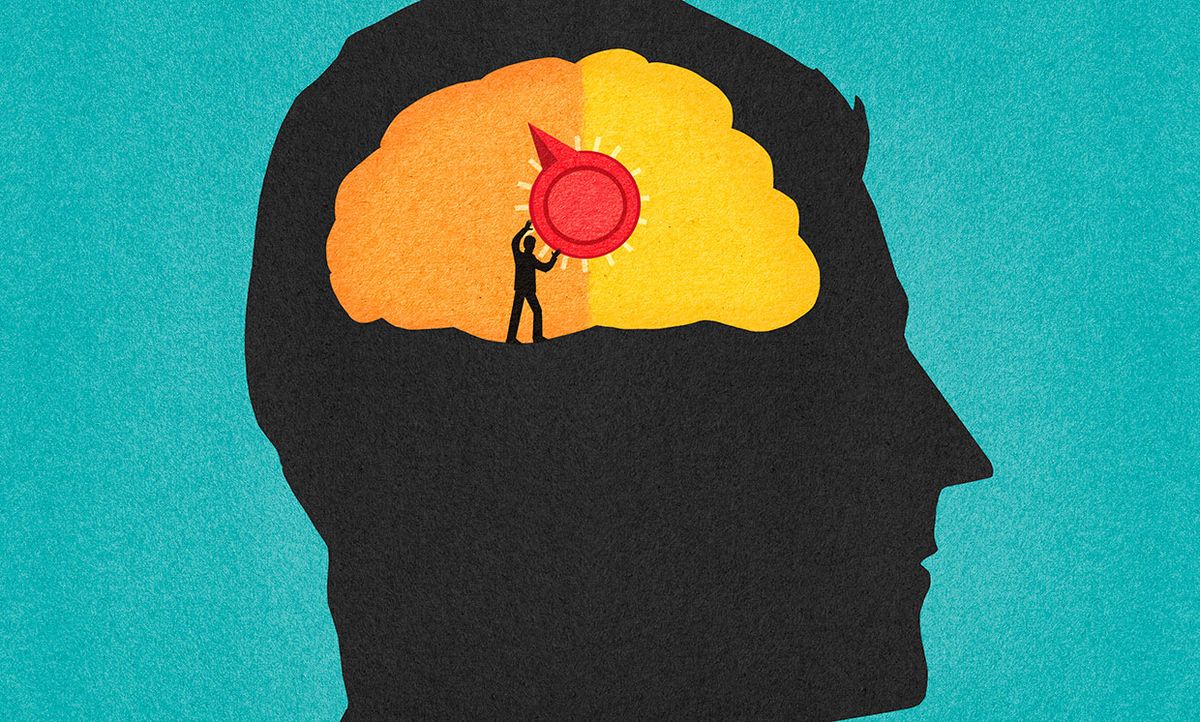A man with depression is driving to work when his mood darkens, and the familiar inklings of anxiety begin to creep in. His brain cells start to fire in a pattern that has, in the past, led him down a dark, dangerous mental road. But this man has a set of electrodes implanted in his brain, and wireless software nearby that’s closely monitoring his neural activity. Algorithms recognize the shift in his brain waves and order up a therapeutic dose of electrical stimulation, zapping the faulty circuits. The man arrives at work calm and stable.
The technology in this scenario doesn’t exist yet, but it’s the vision of Maryam Shanechi, an electrical engineer at the University of Southern California’s Viterbi School of Engineering, and Edward Chang, a neurosurgeon at the University of California, San Francisco. Shanechi presented their progress this week in Nashville, Tennessee, at a neurotechnology meeting held by DARPA, the research arm of the U.S. Department of Defense.
So far, Shanechi and her team have successfully developed algorithms that decoded the brain activity associated with mood changes in seven people. Now, they’re figuring out how to stimulate the brain to affect those mood changes, she reported at the meeting.
When the two pieces of the technology come together, they would form a closed-loop system that puts stimulation therapy decisions in the hands of an algorithm. “We are developing a precise, personalized therapy that takes readings of brain activity, and, based on that, makes decisions on stimulation parameters,” Shanechi said in her presentation in Nashville on Wednesday.
Electrical stimulation techniques are typically administered at an appointed time that has nothing to do with the patient’s state of mind—an “open loop” approach. “They turn it on and see how it affects symptoms,” Shanechi said in an interview with Spectrum after the meeting.
A closed loop system, however, employs algorithms to constantly monitor the patient’s brain activity, and order stimulation the moment the patient needs it, with parameters specific to the patient’s neural activity.
To determine what mood changes look like in the brain, Shanechi and Chang’s team utilized data from seven volunteers, who already had electrodes implanted in their brains for epilepsy seizure treatment. The researchers recorded the patients’ neural activity over a period of several days, during which the patients were asked to periodically answer mood-related questions.
Using their algorithm, the team sorted through the enormous amount of brain wave data to identify the activity associated with mood change. The hot spots differed for each person, and involved several areas of the brain, particularly the orbitofrontal cortex, they reported in October in Nature Biotechnology.
Shanechi’s group also developed mathematical models that predict what kind of electrical stimulation parameters will affect mood. Now they are putting those models to work in humans. “If you want to personalize the models, you have to build them so that you can train them with data collected from each patient,” Shanechi said in the interview. She would not elaborate on the results until they are published, but said they are “promising.”
Her work is the result of funding from one of DARPA’s neuromodulation research initiatives. The funding has led to brain implants that boost memory storage, from Wake Forest University, a closed-loop stimulation system that improves memory, from the University of Pennsylvania, and an incredibly agile robotic arm, from the Johns Hopkins Applied Physics Lab.
The meeting in Nashville this week gathered these and other DARPA-funded researchers to showcase their progress.
Emily Waltz is a features editor at Spectrum covering power and energy. Prior to joining the staff in January 2024, Emily spent 18 years as a freelance journalist covering biotechnology, primarily for the Nature research journals and Spectrum. Her work has also appeared in Scientific American, Discover, Outside, and the New York Times. Emily has a master's degree from Columbia University Graduate School of Journalism and an undergraduate degree from Vanderbilt University. With every word she writes, Emily strives to say something true and useful. She posts on Twitter/X @EmWaltz and her portfolio can be found on her website.



